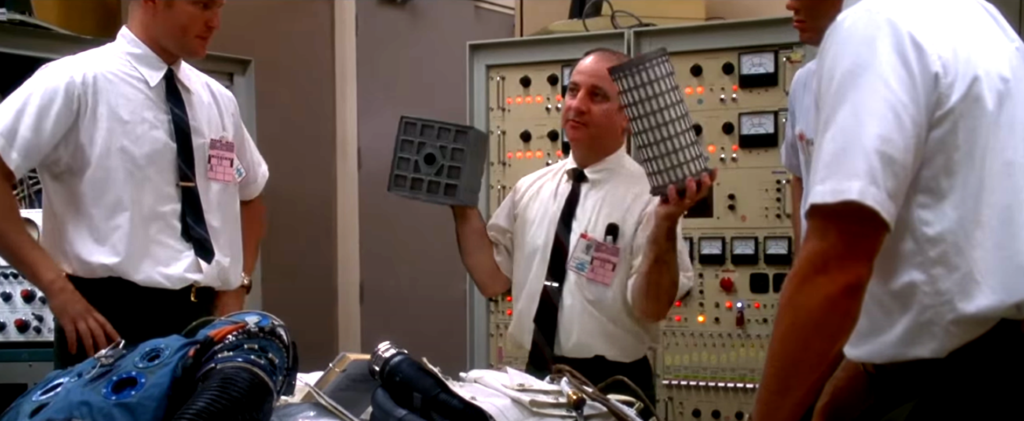BY RACHEL JEFFERIES
 Image Caption: Mission Control Center During Apollo 13 Return Flight.
Image Caption: Mission Control Center During Apollo 13 Return Flight.
Image Source: https://www.nasa.gov/centers/marshall/history/apollo/apollo13/gallery.html.
Last month marked the 50th anniversary of NASA’s Apollo 13 mission. You probably know the story: a relatively “straightforward” mission to begin with, but, at about three-quarters of the way to the moon, everything changes when an oxygen tank explodes. Suddenly, the mission to land on the moon becomes the mission to get the crew back to Earth alive. In recognition of the anniversary, I re-watched the movie Apollo 13, starring Tom Hanks and Ed Harris, during the alert level 4 coronavirus lockdown here in New Zealand. What follows are some thoughts I take from the movie and the strategy lessons we can learn from this incredible moment in history.
Imagine… it is April 1970. You are Flight Director Gene Kranz, at your console in the Mission Operations Control Room at Houston. The oxygen tank has just exploded. You’re faced with a cascade of problems. What do you do? You reframe and adapt.
Gene Kranz: “Let’s look at this thing from … a standpoint of status. What have we got on the spacecraft that’s good?”
In times of disruption, taking time to pause and reflect is vital. Consider different perspectives, view things through a lens of possibility, and look at the bigger picture. In a fundraising context, probably the most important thing you have that’s “good” is your donors.
Later in the movie, a NASA engineer puts a formidable challenge to his team:
“We gotta find a way to make this [holds up cube-shaped filter] fit into the hole for this [holds up cylindrical filter], using nothing but that [points to a pile of random bits and pieces on the table].”
 Image caption/source: Scene from the movie, Apollo 13 (1995)
Image caption/source: Scene from the movie, Apollo 13 (1995)
Incredibly, the team use their limited resources to design a MacGyver-esque solution that helps keep the three astronauts alive on their perilous trip back to Earth.
Fast-forward 50 years to 2020 and we suddenly find ourselves amidst the disruption of the Covid-19 crisis. Like the NASA team, we’re having to adapt in an environment of uncertainty. But, unlike Apollo 13, the uncertainty we face today is global; now it’s about health, jobs, and the economy. What worked for us before the pandemic may not work for us now. Not-for-profits may find that their fundraising strategies are no longer viable or appropriate – like a cube-shaped strategy trying to operate in a newly cylindrical environment. So, if what’s “good” is most likely your community of donors, it’s vital at this time that you find different ways through your strategy to keep your donors connected and engaged with your mission.
Taking stock is also important. As your fundraising strategy shifts and adapts, you – like the NASA engineers – may have limited resources that you need to rely on. And just like those random bits and pieces piled on the table, your existing resources (including your donor database) could offer as-yet-unrealised potential. Consider taking this time to learn more about your donors and review segmentation of your donor database. Getting a really good handle on the various donor groups in your database will help you to understand your donors better, hone your engagement, and maintain the relationship with your donors over time.
How you adapt your fundraising strategy will be different from other organisations. One size does not fit all. But, there are some practical steps that everyone can take to engage communities and maintain donor relationships now. You can start by simply phoning your donors to say hi, touch base, and give a quick update on your organisation. Some of your key donors may appreciate an online video chat. Just like you, your donors have their own issues and vulnerabilities. Calling to check in, perhaps you’ll discover they’re feeling lonely and isolated, maybe they’ve lost their job or have issues with their small business, or maybe (and hopefully) they’re thriving through lockdown. And don’t forget about those who aren’t able to support you at the moment. Keep communicating with everyone.
Some donors may seek information from you at this time, such as:
- What are you doing to benefit the community right now?
- How can I support your organisation?
- How do I include a bequest to your organisation in my will?
Ensure that you have the answers to questions like these readily available for people should they seek them. Consider refreshing your website with up-to-date information and make sure it’s easy to find. If you don’t have a bequest programme or a monthly giving programme in place already, now could be a great opportunity to start.
Explore the various opportunities available in using technology to support your fundraising – such as virtual events, peer-to-peer fundraising, and online giving days. These reformatting solutions may be relevant where event-based fundraising has been either postponed or cancelled. In the long term, an increased acceptance of these forms of engagement and fundraising may help you to connect with people on a much larger scale than ever before.
I’d like to finish with one last movie quote; a quote that further highlights the power of reframing in the face of uncertainty.
NASA Director: “This could be the worst disaster NASA’s ever experienced.”
Gene Kranz: “With all due respect, sir, I believe this is gonna be our finest hour.”
We all face great challenges in our lives. These challenges can be daunting, and even overwhelming at times. Yet, great challenges can also provide great opportunities. When our lives find a “normal” rhythm again – even if that normal is not the same as before – not-for-profits will be remembered for how they responded to these challenges.
